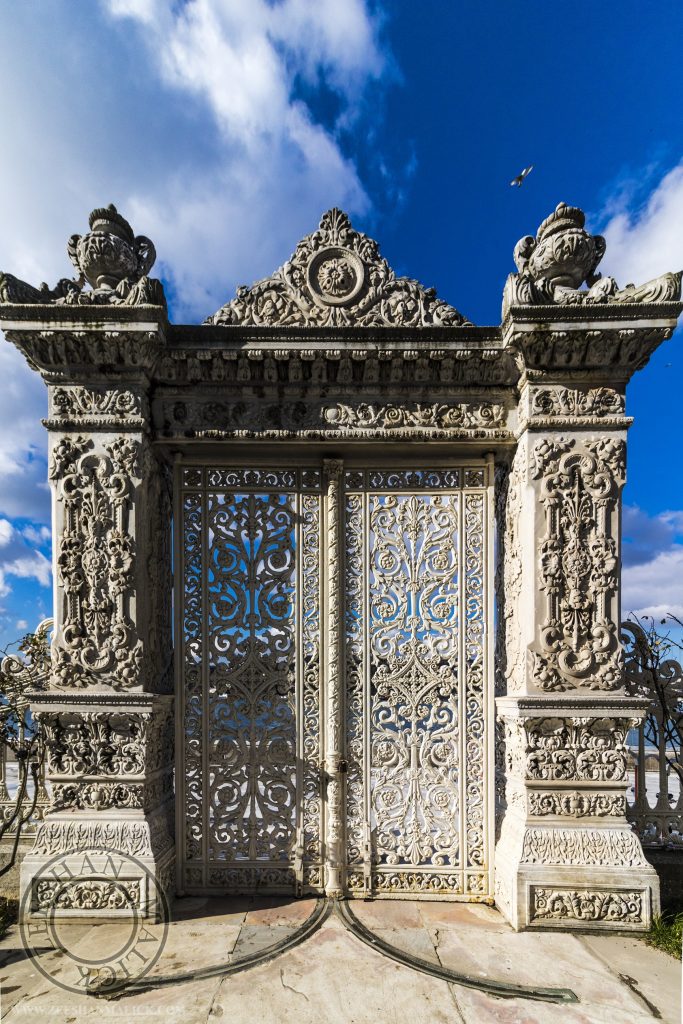Istanbul was the capital of the Ottoman Empire for centuries. Sultans and their wives, princes, viziers and pashas loved to show their power and wealth by building palaces, mosques, hamams, summer houses (köşk) and other types of buildings. Who doesn’t know Mimar Sinan, one of the most famous architects working for the Ottoman court, who presumably built almost 400 different buildings?
It would be difficult to compete with this master builder of classical Ottoman architecture, however, in the 18th and especially the 19th century, a very prolific family of architects significantly changed the cityscape of Istanbul. The Balyan family (of Armenian origin) was one of those who gave the capital more of a “westernized” look. Eight members of the Balyan family earned the title of royal architect.
Dolmabahçe Palace is one the most famous examples of the work of the Balyans, predominantly built in the middle of the 19th century by father and son, Garabet Amira and Nikoğos Balyan. Dolmabahçe Palace was the official residence of sultans (before that it was Topkapi Palace), but it was not the only palace. There were many palaces and residences along the Bosphorus. A few decades ago, the shores of the Bosphorus weren’t as populated, so to run away from the city’s madness, it was enough to go beyond the first bridge over the Bosphorus.
As many palaces and summer houses are facing the sea, it is not surprising that the most impressive façade of each palace faces the Bosphorus. And, not surprisingly considering our love for ferry rides, it seems that also sultans and other members of the royal family loved them (in their private caiques and not with şehir hatları, of course) – from Dolmabahçe Palace, they traveled to other palaces by sea. That also explains why beautifully decorated doors, as the one on the photo, are facing the sea: behind these doors there were sultans’ private piers.

Ottoman sultans built several palaces around Istanbul and especially along the Bosphorus shores, and still today one can witness their charming summer residences as most have been converted to museums and are open to the public. Guided tours in Turkish and English are organised many times per day in case you needed yet another reason to fall in love with Istanbul (again). You can reach the palaces on the Asian side of Istanbul by buses which depart from Üsküdar or by Hop on & Hop Off Bosphorus tour which stops by National Palaces. The return tickets cost 15 TL. Tours depart from Beşiktaş, or you can join them from any of the piers next to the palaces.
Beylerbeyi Palace in Üsküdar was designed by Sarkis Balyan and was built between 1861-1865. It was a summer residence and quite easily accessible from Dolmabahçe Palace. The palace lies almost opposite another of the Balyan family’s gems: Ortaköy mosque. Beylerbeyi Palace probably wasn’t the favourite of Sultan Abdulhamid II, who was spent his final six years here until his passing in 1918. If you wish to run away from Istanbul’s madness, I do recommend a to visit the Beylerbeyi garden (entrance fee is a symbolic 1 TL).

If we take a ride along the Bosphorus, passing the impressive army high school Kuleli Askeri Lisesi (the work of Garabed Amira Balyan), we will soon reach another summer residence, this time a bit smaller, but with a rich façade in baroque style: Küçüksu Kasri (pavillion). This summer residence was built for daily getaways of the sultans and their official receptions and is a bit smaller than Beylerbeyi Palace. The building itself was designed by Nikoğos Balyan. The interior decoration was made on a base of drawings of the designer of Vienna state opera, August Sicard. Fans of Bond movies might have seen this very palace in “The World is Not Enough” as Elektra’s mansion in Baku.

On the European side of Istanbul, again facing the Bosphorus is another palace built by the Balyans: Çirağan Palace, which has since been turned into a luxury hotel. The palace was designed by Nigoğyos Balyan and built by his sons, Sarkis and Hagop. A marble bridge connects the palace with Yıldız Park, which surrounds the Yıldız Palace complex, located on the top of the hill. The latter was built by the Italian Raimondo d’Aronco at the end of the 19th century when Sultan Abdülhamid II decided to leave Dolmabahçe palace, as he feared a seaside attack.

Have any bits of fun trivia about the Balyan family and their architectural works? We’d love to hear about them in the comments!
Photos are courtesy of Zeeshan Malick.









